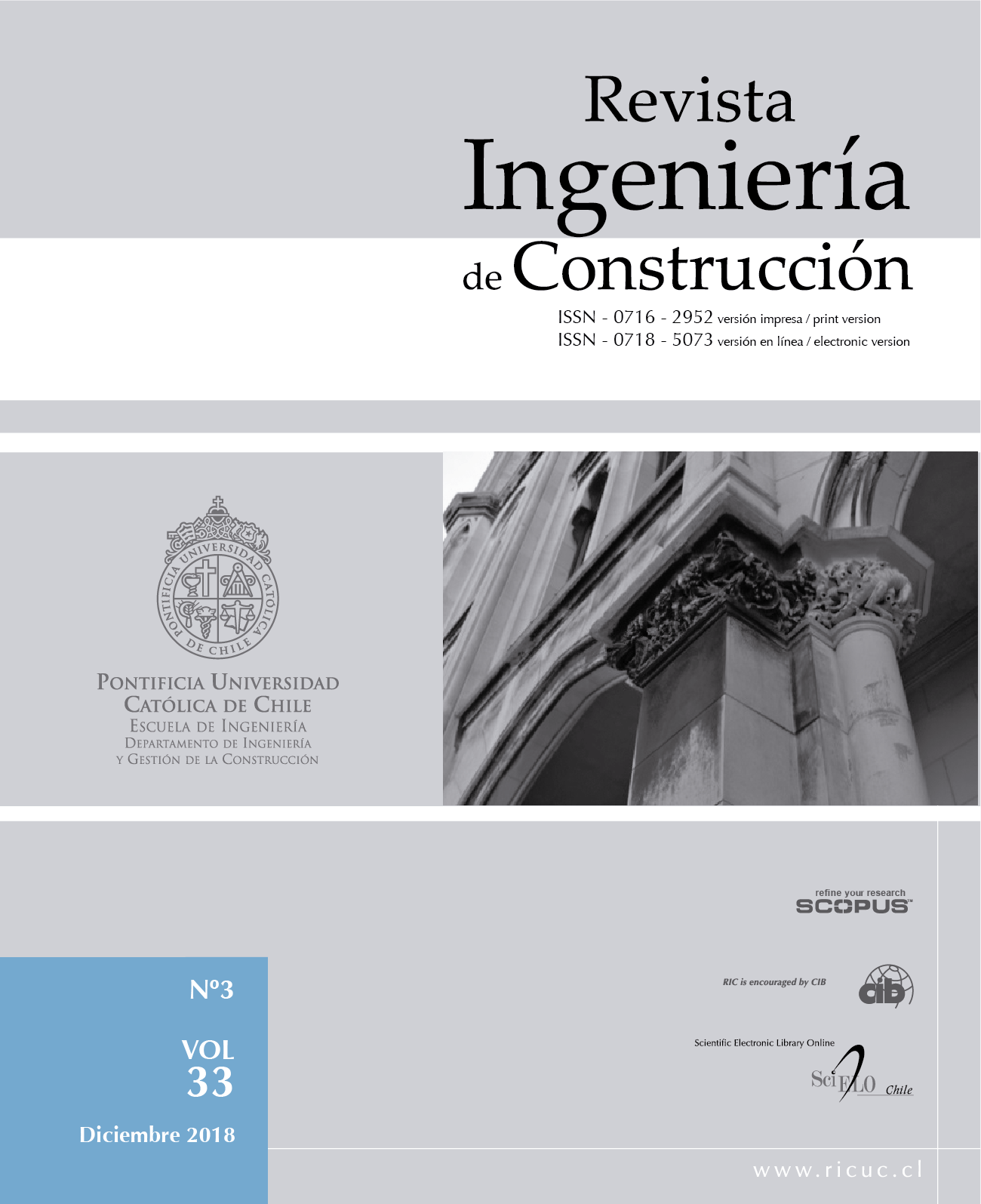An alternative approach to consider the effect of seismic directionality
DOI:
https://doi.org/10.4067/S0718-50732018000300279Keywords:
: Directionality effect, nonlinear static analysis, capacity curve, response spectrum, seismic performanceAbstract
Recent researches have proven the importance of considering the seismic directionality effect. The performance of buildings subjected to earthquakes depends on its orientation respect to the seismic actions applied. This type of calculation is computed using the nonlinear dynamic analysis (NLDA) and rotating the acceleration horizontal components onto all non-redundant angles, which entails a high computational cost. This paper presents an alternative approach to consider the directionality effect. The method is based on the nonlinear static analysis (NLSA) and in the energy balance between the capacity curves and the response spectra of the rotated seismic actions. This approach was applied to a 4-story steel frame building 3D-model with ground motions records from Mexico City. A high variability in the building performance is observed due to the incidence angle of the seismic action; the proposed method would allow considering this variation in the structural analysis, in an easy way, demanding less calculation time and providing results compatible with those obtained through the NLDA.


